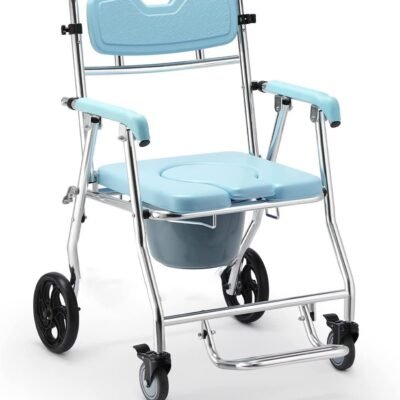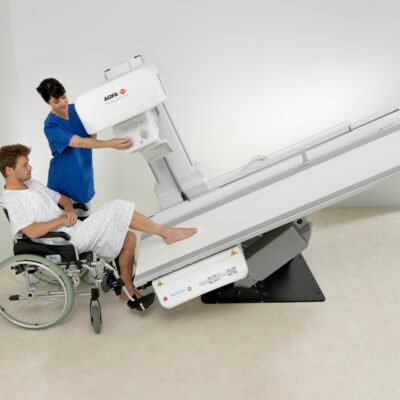3D printing technology is transforming how we approach medical care, from creating custom prosthetics to developing specialized medical devices. Let’s dive into how 3D printing is revolutionizing Aussie healthcare and what it means for patients and professionals alike.
The Rise of 3D Printing in Healthcare
3D printing, also known as additive manufacturing, involves creating three-dimensional objects layer by layer from a digital model. While the concept has been around for a few decades, recent advancements have made it more accessible and versatile, allowing its application in various fields, including healthcare.
The adoption of 3D printing in healthcare has been particularly impressive. The healthcare system is renowned for its innovation and quality, and 3D printing is adding a new dimension to patient care. From personalized medical devices to complex surgical models, the possibilities are endless.
Custom Prosthetics: A New Era of Personalization
One of the most impactful applications of 3D printing in healthcare is the creation of custom prosthetics. Traditional prosthetic limbs can be costly and may not fit perfectly, leading to discomfort and limited functionality. 3D printing offers a solution by enabling the production of prosthetics that are tailored to the individual’s anatomy.
In Australia, several initiatives and startups are leveraging 3D printing to produce affordable and customized prosthetic limbs. For instance, organizations like Limbitless Solutions are creating bespoke prosthetics for children, allowing them to lead more active and fulfilling lives. The ability to print prosthetics quickly and cost-effectively means that more patients can access the care they need without long waiting times.
The process typically begins with a detailed scan of the patient’s residual limb. This scan is then used to create a digital model, which is printed using biocompatible materials. The result is a prosthetic that fits perfectly, offering better comfort and functionality. Patients can choose from various designs and colors, adding a personal touch to their prosthetics.
Orthotics and Implants: Precision and Comfort
Beyond prosthetics, 3D printing is making significant strides in the production of orthotics and implants. Custom orthotics, such as braces and supports, are crucial for patients with musculoskeletal issues. Traditional methods of creating these devices can be time-consuming and often result in a one-size-fits-all solution. 3D printing changes this by allowing for precise customization.
In Australian clinics and hospitals, 3D-printed orthotics are becoming more common. These devices are designed to fit the patient’s unique anatomy, providing better support and comfort. For example, 3D-printed insoles for patients with plantar fasciitis can be customized to provide optimal arch support and pressure relief, significantly improving their quality of life.
Similarly, 3D printing is revolutionizing the production of implants. Whether it’s a hip replacement or a dental implant, the ability to create patient-specific implants ensures a better fit and faster recovery. Surgeons can work with precise models that match the patient’s anatomy, reducing the risk of complications and improving surgical outcomes.
Surgical Models and Guides: Enhancing Precision
Another exciting application of 3D printing in Aussie healthcare is the creation of surgical models and guides. These tools are invaluable for complex surgeries, allowing surgeons to plan and practice procedures before operating on the patient.
For instance, in cases of intricate craniofacial surgeries, 3D-printed models of the patient’s skull can be used for pre-surgical planning. Surgeons can visualize the anatomy in detail, plan the best approach, and even simulate the surgery. This level of preparation enhances precision and reduces the risk of errors.
Custom surgical guides, created through 3D printing, also play a crucial role in improving surgical outcomes. These guides are designed based on the patient’s specific anatomy and are used to ensure that implants and instruments are placed accurately during surgery. In orthopedic surgeries, for example, 3D-printed guides help ensure that screws and plates are positioned correctly, leading to better alignment and faster healing.
Bioprinting: The Future of Regenerative Medicine
While still in its early stages, bioprinting represents the frontier of 3D printing in healthcare. This advanced form of 3D printing involves creating structures using living cells and biomaterials, with the ultimate goal of printing functional tissues and organs.
In Australia, researchers and institutions are making significant strides in bioprinting. The potential applications are immense, from creating skin grafts for burn victims to developing liver tissues for drug testing. The ability to print tissues that mimic the natural architecture of human organs opens up new possibilities for regenerative medicine and personalized treatments.
One notable example is the work being done at the University of Wollongong’s ARC Centre of Excellence for Electromaterials Science. Researchers here are exploring the use of bioprinting to create structures that can support cell growth and tissue development. While we are still some years away from printing fully functional organs, the progress being made is promising and could revolutionize organ transplantation and tissue repair in the future.
Accessibility and Affordability
One of the most significant advantages of 3D printing in healthcare is its potential to make medical devices more accessible and affordable. Traditional manufacturing methods often involve high costs and long production times. In contrast, 3D printing allows for rapid prototyping and production, reducing costs and improving access to care.
For patients in remote and rural areas of Australia, this is particularly beneficial. Access to specialized medical devices and implants can be challenging due to geographic constraints. 3D printing enables the local production of these devices, ensuring that patients receive timely and effective care.
Challenges and Considerations
While the benefits of 3D printing in healthcare are clear, there are also challenges and considerations to address. Quality control and regulatory approval are crucial to ensuring the safety and efficacy of 3D-printed medical devices. In Australia, the Therapeutic Goods Administration (TGA) plays a vital role in regulating these devices and ensuring they meet stringent standards.
Additionally, the integration of 3D printing into clinical practice requires training and education for healthcare professionals. Surgeons, technicians, and designers need to collaborate closely to harness the full potential of this technology.




